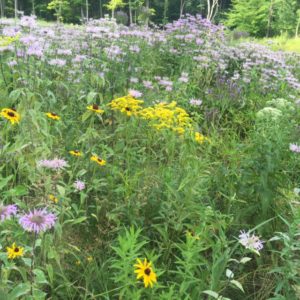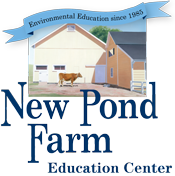Several years ago we experienced the formidable power of Super Storm Sandy. Over 200 trees, mainly mature white pines, either splintered mid-trunk loosing their crowns, or came crashing down altogether.
An estimated seven acres needed to be reclaimed.
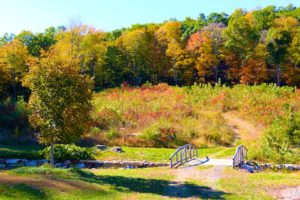
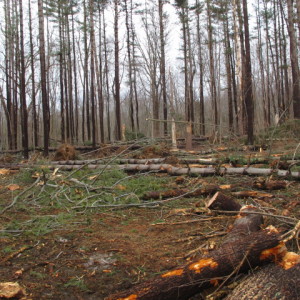
Working with the Conservation Commission, the Redding Land Trust, and teams of arborists, an action plan was drawn up, permits were secured, and the fallen timbers were cleared from the affected areas.
Trying to make the best of things, we are in the process of creating both wetland and upland meadow habitats behind the marsh, providing the property with greater biological diversity. As for the areas along side the entrance to our trails, it will be an incredible opportunity for all of us to witness the process of natural succession. In the past few years this decimated area has sprung to life with dock, pokeweed, mullein, lupines, young tulip and birch trees and so much more-it has become an enormous food bank for resident and migrating songbirds.
Tree Work On the Farm by John Campbell, NPF Board Member (2014)
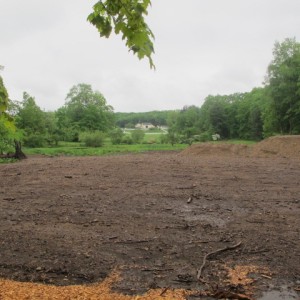
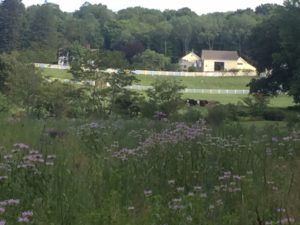 Sometimes, the old saying goes, you can’t see the forest for the trees. That is, unless something like Superstorm Sandy comes along. During the high winds of the late October storm, two stands of white pines were devastated at NPF. These two stands of trees were most probably planted between 70 and 90 years ago, based on their size.
Sometimes, the old saying goes, you can’t see the forest for the trees. That is, unless something like Superstorm Sandy comes along. During the high winds of the late October storm, two stands of white pines were devastated at NPF. These two stands of trees were most probably planted between 70 and 90 years ago, based on their size.
The two patches of pines, one near the entry road just west of the sugar house, and the other near the stream corridor at the north property line, lost over one hundred trees during the storm. Winds up to 90 mph uprooted and snapped off pines in excess of 24” dbh (diameter breast height), leaving a tangled, unstable, and dangerous situation within our trail network.
Both areas are presently being worked on to address this significant problem.
The area of the stand nearest the main education building and sugar house will be returned to the mixed hardwood forest that presently surrounds it. This native woodland, about 65 acres in size, sustained very limited damage during the recent storms and will supply all the nuts and seeds necessary to begin the hardwood forest lifecycle anew. This process begins immediately and will evolve over several human generations. The first thing we will notice in our lifetime is the emergence low level undergrowth followed by the growth of pioneer species trees such as Black Birch and Red Cedar.
The area nearest the stream corridor will become a transitional wet meadow, with some help from over-seeding with a variety of meadow loving grasses and flower species. This summer we will see sedges and annual native wildflowers in this area. Nature will ultimately decide on the boundary line between upland and wetland meadow.
It is exciting to note that the result of our actions will reveal a new dimension to NPF’s biological diversity and effectively create an additional outdoor classroom.
